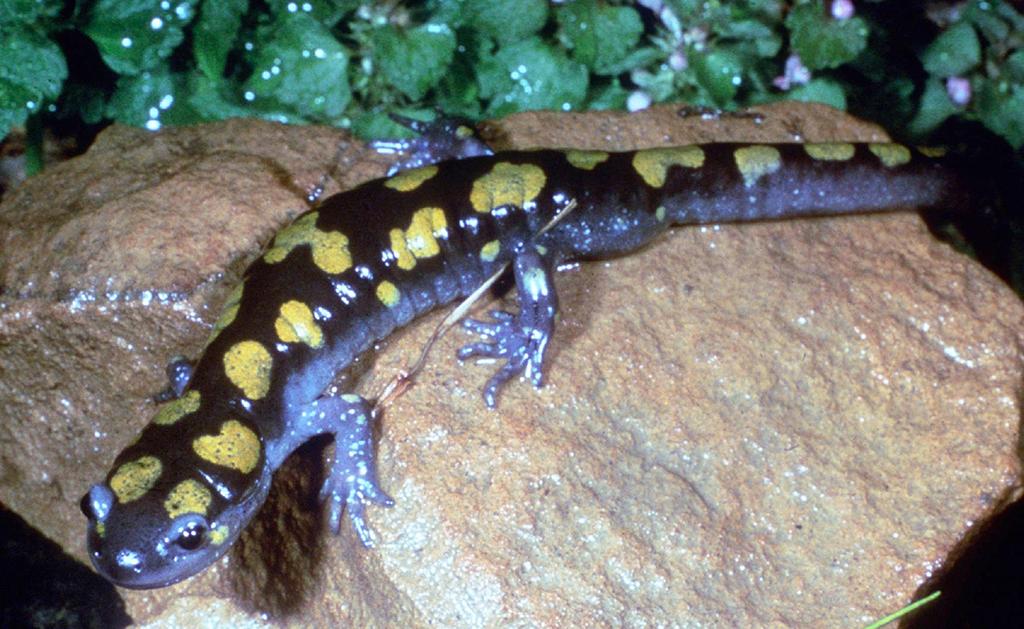Great Smoky is rich in wildlife, ranging from humongous “hellbenders” (a type of salamander) and wild hogs to 500-pound (227-kg) black bears and heavily anterled elk that resulted from a recovery program launched in 2001. The park also is home to wild turkeys and a highly unusual firefly with a unique ability.

Elk in the Cataloochee Valley, Great Smoky Mountains National Park / Thomas via Flickr
Where can you spot some of these animals?
Your best opportunity to watch and listen to the elk resides in the Cataloochee Valley on the southeast section of the park. What started out as an experiment in 2001 is now considered a success. Elk once again roam the mountains and valleys in Great Smoky, giving visitors in fall another slide of nature to enjoy. Right around dawn and dusk the meadows here lure the elk for their meals. If you’re determined to hear the bulls bugle, though, you’ll have to time your visit in the months of September and October when the elk are mating.
The meadows at Cataloochee and Cades Cove also are popular with wild turkeys, and in fall you just might catch the toms trying to impress with the colorful fans of their tail feathers spread wide. Deer also are common visitors to these areas, and black bear like to raid the apple harvest in Cades Cove.
Black bears on occasion travel by trail, so keep alert while hiking, particularly early in the morning or late in the day, when the bruins might be more active.

Pine warbler, Great Smoky Mountains National Park / NPS - Warren Bielenberg via Flickr
There are over 200 species of birds frequenting or living within Great Smoky, including 85 species that migrate from the neotropics (Central and South America and the Caribbean). At higher elevations flocks of migrating broad-winged hawks often can be seen when the first cold front comes through during the first half of September. With the cold front, raptors follow the Appalachian Range, riding the thermals over land. The best vantage points include Newfound Gap, Clingmans Dome, Look Rock, and Indian Gap.
You probably don't want to encounter of the park's feral hogs, as they can be quite vicious. The pigs can be traced back to Murphy, North Carolina, where they arrived in 1912 for use as game at a private hunting ground. Apparently the hunters couldn’t keep up with the prey, for eight years later more than 100 pigs were said to have escaped the preserve.
They quickly found the mountains to be close to pig heaven, thanks to the acorns that fall from white oaks, the once-bountiful chestnut trees, and the hickory nuts, not too mention just about anything else they consider edible, whether that be insects, salamanders or bird eggs. These rooting and wallowing hogs threaten natural ecological communities. They'll eat just about anything, including Jordon’s Salamanders, which are found only in the park, and the roots and foliage of wildflowers that often take years to mature and bloom.

Spotted salamander, Great Smoky Mountains National Park / NPS file
Spend any time in any of the park's streams and you might easily discover why the park is considered the salamander capital of the world. Salamanders are an especially abundant and diverse group in the Great Smokies. In fact, the great majority of vertebrate (backboned) animals, including human visitors, in the park on any given day are salamanders.
Five families of salamanders are represented in the park: Cryptobranchidae, Proteidae, Salamandridae, Ambystomatidae, and Plethodontidae.
The southern Appalachian Mountains, including the Smokies, are a major center of evolutionary diversification for the family Plethodontidae, commonly known as the lungless salamanders. There are 24 species of lungless salamanders in the park. They "breathe" (exchange oxygen and carbon dioxide) through the walls of tiny blood vessels in their skin and linings of their mouths and throats. Lungless salamanders occur everywhere in the Great Smokies, in and along streams and under rocks, logs, and leaf litter in the forests.
Perhaps the most unusual segment of the park's wildlife are the synchronous fireflies that live in the Smokies. While there are 19 species of fireflies in the park, these are the only ones in North America with the unique ability to ... flash in sync! Visitors who wish to view the fireflies must acquire a vehicle reservation via lottery to park in these areas and may be purchased through recreation.gov.
To find out what birds, animals, fish, reptiles, and amphibians you migh encounter in the park, click here.





